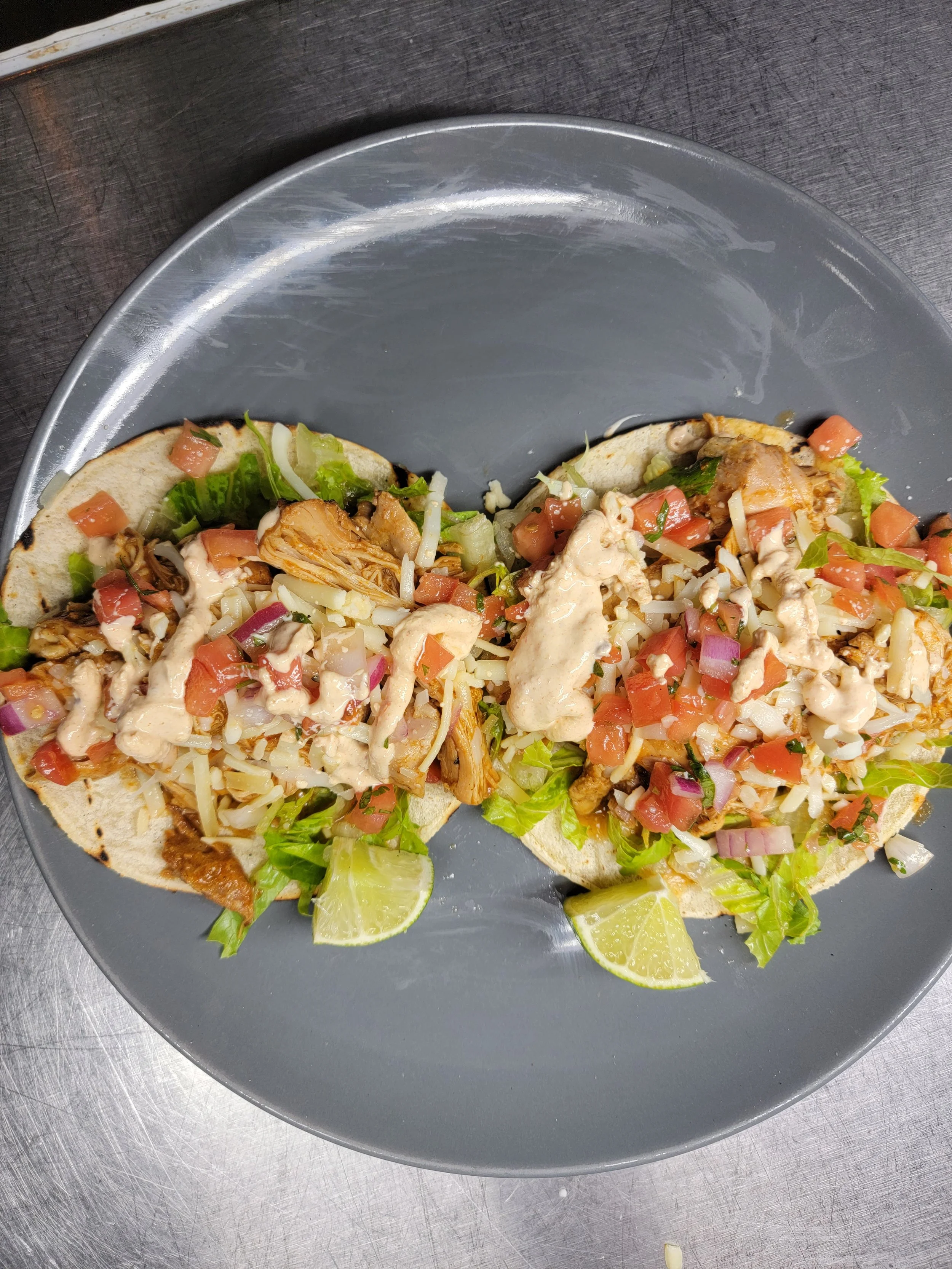The Ultimate Guide to Slow Cooker Recipes for Busy Families: Creating Healthy, Hassle-Free Meals
Slow Cooker Recipes for Busy Families: A Culinary Revolution
Hey there, fellow culinary enthusiasts! If you're reading this, it's likely because you, like me, lead a busy life. Between work, family, and other responsibilities, finding the time to prepare healthy meals can be a daunting task. But fear not, for I have a solution that will not only save you precious time but also leave your taste buds dancing with delight.
In this in-depth guide, we'll dive into the world of slow cooker recipes, a savior for busy families. I'll walk you through how to choose the best slow cooker for your needs, share some incredible recipes, and provide you with the pros, cons, and tech specs to make an informed decision. By the end of this article, you'll have the tools to revolutionize your family's dining experience.
The Slow Cooker Revolution
Before we delve into the recipes and nitty-gritty details, let's explore why slow cooker recipes are a game-changer for busy families.
The Power of Time Efficiency
When it comes to meal prep, time is of the essence. Slow cooker recipes allow you to prepare a hearty, healthy meal in the morning and come home to a fragrant, ready-to-eat dinner. Say goodbye to last-minute takeout or resorting to unhealthy convenience foods.
Slow Cooker Selection: Choosing Your Culinary Partner
Now, let's talk hardware. Not all slow cookers are created equal. To maximize your slow cooking success, you'll want to choose the right one for your family's needs.
Pros and Cons of Slow Cooker Recipes
As with any kitchen appliance, slow cookers have their advantages and disadvantages. Let's weigh the pros and cons.
Pros of Slow Cooker Recipes:
Convenience:
Slow cookers allow for a 'set it and forget it' approach, meaning you can prepare the ingredients, place them in the cooker, and let the dish cook without needing to supervise.
Time Management:
They are ideal for busy individuals since the meal can cook while you're at work or tending to other activities.
Energy Efficiency:
Slow cookers typically use less electricity than ovens, making them a more energy-efficient option for cooking.
Flavor Development:
The long cooking times allow for deep flavor development, as the ingredients have time to meld together.
Nutrition:
Slow cooking at low temperatures can preserve the nutrients in food better than high-heat cooking methods.
Safety:
The appliance can be left on while you’re out, with many models having automatic 'keep warm' functions for safety and convenience.
Versatility:
Slow cookers are not just for stews and soups; they can be used for a wide array of dishes, including bread, cakes, and even yogurt.
Less Monitoring:
There’s no need to stir or check on the dish frequently, reducing the hands-on cooking time.
Budget-Friendly:
They are great for tenderizing cheaper cuts of meat, helping to save money on groceries.
Summer-Friendly:
Slow cookers give off less heat compared to ovens, making them ideal for use in the summer months.
Cons of Slow Cooker Recipes:
Planning Required:
You need to plan ahead since recipes require a longer cooking time.
One Texture:
Dishes often lack textural variety, as the slow cooking process doesn't allow for crispy or crunchy elements.
Not for Every Recipe:
Certain recipes, especially those that require crispiness or a sear, aren’t well-suited for slow cookers.
Overcooking:
If left too long, even on a low setting, some dishes can become overcooked, especially vegetables and delicate proteins.
Size and Storage:
Slow cookers can be bulky and may take up considerable counter or storage space in smaller kitchens.
Limited Searing:
Most slow cookers do not have a sear function, which means meats must be browned on the stove first for optimum flavor, creating an extra step.
Timing:
They are not suitable for those who want a meal prepared quickly.
Safety Concerns:
While generally safe, leaving any appliance unattended comes with inherent risks, such as electrical faults.
Diluted Flavors:
Some argue that slow cookers dilute flavors, especially when too much liquid is added, as there's little evaporation.
Power Outages:
If there is a power outage while you’re away, the food can spoil without proper cooking, which can be a concern if you're out for the entire day.
In summary, slow cooker recipes are a boon for those who value convenience and are managing a busy lifestyle, but they might not suit those who prefer quick, seared, or high-heat cooking methods. The decision to use a slow cooker will largely depend on one’s cooking preferences, lifestyle needs, and dietary habits.
The Art of Slow Cooking: Recipes for Success
Here's the moment you've been waiting for – delectable slow cooker recipes that will transform your hectic family dinners into delightful culinary experiences.
Creating a detailed cookbook with nutritional info requires precision and care. Below are the recipes for each of the dishes you've requested, complete with ingredients, instructions, nutritional information, and serving sizes.
Please note that nutritional values are approximate and can vary based on specific ingredient choices and measurement variations.
Some of my slow cooker recipes for you to enjoy!
1. Succulent Slow Cooker Pulled Pork
Servings: 8
Ingredients:
4 pounds pork shoulder
1 tablespoon brown sugar
2 teaspoons smoked paprika
1 teaspoon garlic powder
1 teaspoon onion powder
1 teaspoon salt
1/2 teaspoon black pepper
1 cup barbecue sauce
1/2 cup apple cider vinegar
1/2 cup chicken broth
Instructions:
In a small bowl, mix the brown sugar, smoked paprika, garlic powder, onion powder, salt, and black pepper.
Rub the spice mixture all over the pork shoulder.
Place the seasoned pork into the slow cooker.
In another bowl, whisk together the barbecue sauce, apple cider vinegar, and chicken broth.
Pour the mixture over the pork in the slow cooker.
Cook on low for 8 hours or until the pork shreds easily with a fork.
Shred the pork using two forks and stir into the sauce.
Let it cook for an additional 30 minutes on low.
Nutritional Information per Serving:
Calories: 410
Fat: 20g
Carbohydrates: 15g
Protein: 40g
Sugars: 11g
Fiber: 0g
Sodium: 700mg
2. Savory Chicken and Vegetable Stew
Servings: 6
Ingredients:
1.5 pounds boneless, skinless chicken breasts
3 carrots, peeled and sliced
2 potatoes, peeled and diced
1 onion, chopped
3 garlic cloves, minced
4 cups chicken broth
1 teaspoon dried thyme
1 teaspoon dried rosemary
1/2 teaspoon salt
1/2 teaspoon black pepper
1 cup frozen peas
2 tablespoons cornstarch
2 tablespoons water
Instructions:
Place the chicken, carrots, potatoes, onion, and garlic into the slow cooker.
Pour in the chicken broth and sprinkle with thyme, rosemary, salt, and pepper.
Cook on low for 6 hours.
Remove the chicken, shred it, and return it to the slow cooker.
Add the frozen peas.
Mix cornstarch with water and stir into the stew to thicken.
Cook on high for an additional 30 minutes or until the stew reaches the desired consistency.
Nutritional Information per Serving:
Calories: 280
Fat: 3g
Carbohydrates: 28g
Protein: 33g
Sugars: 5g
Fiber: 4g
Sodium: 700mg
3. Vegetarian Delight: Lentil and Sweet Potato Curry
Servings: 6
Ingredients:
1 cup dry lentils, rinsed
2 large sweet potatoes, peeled and cubed
1 onion, chopped
3 garlic cloves, minced
1 tablespoon curry powder
1 teaspoon ground cumin
1/2 teaspoon ground ginger
1/2 teaspoon salt
1/4 teaspoon cayenne pepper (optional)
4 cups vegetable broth
1 can (14 oz) coconut milk
2 tablespoons tomato paste
Fresh cilantro for garnish
Instructions:
Place the lentils, sweet potatoes, onion, and garlic into the slow cooker.
Add in curry powder, cumin, ginger, salt, and cayenne pepper.
Pour in the vegetable broth and stir in the tomato paste.
Cook on low for 7 hours.
Stir in coconut milk and cook on high for an additional 30 minutes.
Garnish with fresh cilantro before serving.
Nutritional Information per Serving:
Calories: 350
Fat: 13g
Carbohydrates: 47g
Protein: 13g
Sugars: 8g
Fiber: 11g
Sodium: 600mg
4. Satisfying Beef Chili
Servings: 8
Ingredients:
2 pounds lean ground beef
1 onion, chopped
3 garlic cloves, minced
2 (14 oz) cans diced tomatoes, undrained
1 (14 oz) can tomato sauce
2 tablespoons chili powder
1 teaspoon ground cumin
1 teaspoon salt
1/2 teaspoon black pepper
1 can (15 oz) kidney beans, drained and rinsed
1 can (15 oz) black beans, drained and rinsed
1 bell pepper, chopped
Instructions:
In a skillet, brown the ground beef with the onion and garlic. Drain the excess fat.
Transfer the beef mixture to the slow cooker.
Add diced tomatoes, tomato sauce, chili powder, cumin, salt, and pepper.
Cook on low for 6-8 hours.
Add the kidney beans, black beans, and bell pepper in the last hour of cooking.
Nutritional Information per Serving:
Calories: 340
Fat: 8g
Carbohydrates: 33g
Protein: 35g
Sugars: 6g
Fiber: 10g
Sodium: 800mg
5. Tantalizing Teriyaki Salmon
Servings: 4
Ingredients:
4 salmon fillets (about 6 ounces each)
1/2 cup teriyaki sauce
2 tablespoons honey
1 tablespoon fresh ginger, minced
1 garlic clove, minced
Sesame seeds for garnish
Sliced green onions for garnish
Instructions:
Place the salmon fillets in the slow cooker.
In a small bowl, mix the teriyaki sauce, honey, ginger, and garlic.
Pour the sauce over the salmon.
Cook on low for 2 hours.
Garnish with sesame seeds and green onions before serving.
Nutritional Information per Serving:
Calories: 360
Fat: 14g
Carbohydrates: 23g
Protein: 34g
Sugars: 18g
Fiber: 0g
Sodium: 1200mg
Please be sure to adjust seasonings and cooking times to your personal preference and according to the specific type of slow cooker you own, as they can vary in temperature and cooking speed. Always check that the meat is cooked through (reaching a safe internal temperature) before serving.
Each recipe comes with detailed instructions and a list of ingredients that even the most novice home chef can follow.
Making the Right Choice: Slow Cooker Recommendations
To ensure you have the best slow cooker experience, here are my top recommendations based on your family's needs and budget.
Conclusion: Embrace the Slow Cooker Lifestyle
In conclusion, the world of slow cooker recipes is a treasure trove for busy families seeking convenient, nutritious, and delicious meals. From choosing the right slow cooker to mastering recipes that will impress even the pickiest eaters, you're well-equipped to embark on this culinary journey.
Make the switch to slow cooker cooking, and watch your family's dining experience transform. Say goodbye to stress and hello to more quality time with your loved ones.
Now, it's your turn. Which slow cooker recipe will you try first? Share your thoughts and experiences in the comments below. Happy slow cooking!
FAQ: Your Burning Slow Cooker Questions Answered:
What's the difference between a slow cooker and a crockpot?
The terms "slow cooker" and "crockpot" are often used interchangeably, but there are distinctions. A "Crock-Pot" is a brand name for a type of slow cooker, first introduced in the 1970s, whereas "slow cooker" is a generic term that refers to the category of appliances. The main difference lies in the design and the heating elements.
A Crock-Pot is a type of slow cooker with a stoneware pot that sits inside a surrounding heating element. This brand became synonymous with slow cooking and its popularity led to the generic use of its name to describe all slow cookers. A Crock-Pot's heating element typically wraps around the pot and can often offer more consistent heat distribution.
A slow cooker, on the other hand, may have a metal pot or a pot made of a different type of ceramic, and can have varied configurations of heating elements. Some heat from the bottom and rely on the pot's material to distribute heat, while others might also have heating elements that wrap around the sides.
In functionality, both operate on the same principle of low-temperature cooking over a long period, and most recipes can be used interchangeably between a Crock-Pot and another brand's slow cooker.
Can I use a slow cooker for breakfast recipes?
Absolutely! Slow cookers are incredibly versatile and are not just for lunch and dinner recipes. For breakfast, a slow cooker can be used to make a variety of dishes, including oatmeal, casseroles, frittatas, and even bread or cakes. Overnight slow cooker recipes are especially popular for breakfast because you can assemble the ingredients the night before, let them cook while you sleep, and wake up to a warm, ready-to-eat meal in the morning. This can be a great time-saver and a way to serve a nutritious and comforting hot breakfast with minimal morning prep.
Are slow cookers energy-efficient?
Yes, slow cookers are known for their energy efficiency, especially when compared to conventional ovens. A slow cooker uses a similar amount of energy as a light bulb. Over the long cooking time, it tends to use less energy than an oven would to cook a meal for the same duration because slow cookers operate at much lower temperatures and are well-insulated cooking devices. This makes them an economical choice for long cooking times.
How do I prevent overcooking in a slow cooker?
To prevent overcooking in a slow cooker, follow these tips:
Adhere to the recipe's recommended cooking times and settings. If you're adapting a recipe, err on the shorter cooking time and check for doneness.
Know your slow cooker. Some cook hotter or faster than others, even on the same settings. Once you're familiar with how yours behaves, you can adjust times accordingly.
Use a timer. If a recipe calls for a shorter cooking time than you'll be away, use a programmable slow cooker that can switch to a "keep warm" setting after cooking.
Cut dense vegetables into smaller, uniform pieces to ensure they cook through without overcooking the main dish.
Avoid opening the lid frequently, as this can release heat and extend cooking time.
Can I cook frozen meat in a slow cooker?
It's generally not recommended to cook frozen meat in a slow cooker due to food safety concerns. The slow cooker's low temperatures mean that frozen meat will remain in the "danger zone" (between 40°F and 140°F) for too long, which can allow harmful bacteria to multiply. It's safest to thaw meat in the refrigerator before adding it to the slow cooker. If you must cook from frozen, it's recommended to use another cooking method that brings the meat to a safe temperature more quickly.
What are some time-saving slow cooker hacks?
To save time when using a slow cooker, consider these hacks:
Prepare ingredients the night before and store them in the fridge. In the morning, you can just place them in the cooker and start cooking.
Use disposable slow cooker liners for easy cleanup.
Cook in large batches and freeze portions for future meals.
Invest in a programmable slow cooker that can start and stop cooking at set times.
For faster cooking, cut ingredients into smaller pieces and set your slow cooker to high for the first hour before turning it down to low.
Can I adapt regular recipes for a slow cooker?
Yes, most regular recipes can be adapted for a slow cooker with some adjustments:
Reduce the amount of liquid since there is little to no evaporation in a slow cooker.
Adjust the cooking times. As a general rule of thumb, one hour of simmering on the stovetop or baking at 350°F in the oven is equivalent to about 6-8 hours on low or 3-4 hours on high in a slow cooker.
Brown meats before adding them to the slow cooker to deepen the flavors.
Add delicate vegetables and dairy products towards the end of cooking to prevent them from overcooking or curdling.
Is it safe to leave a slow cooker unattended all day?
Slow cookers are designed to be left alone, and it is generally safe to leave a slow cooker on while you are out of the house. However, you should take some safety precautions:
Make sure the slow cooker is placed on a flat, heatproof surface.
Keep it away from the edges of counters, and ensure it's not in contact with curtains or other flammable items.
Check that the cooker and cord are in good condition.
Avoid leaving the slow cooker on high unattended for extended periods; the low setting is safer for longer durations.
How do I clean and maintain my slow cooker?
To clean and maintain your slow cooker:
Always unplug it and allow it to cool before cleaning.
If your slow cooker has a removable pot, wash it with warm soapy water or place it in the dishwasher if it's dishwasher-safe.
Wipe down the exterior and the heating element with a damp cloth.
For tough stains, use a paste made from baking soda and water, apply it to the stain, let it sit for 20 minutes, then scrub and rinse.
To deodorize, fill the cooker with water, add a half-cup of baking soda or vinegar, and let it heat on low for an hour.
Avoid using metal utensils that can scratch the surface.
Regularly check the cord and plug for any damage.
Can I make desserts in a slow cooker?
Absolutely! Slow cookers are excellent for making a variety of desserts. You can make cheesecakes, brownies, cakes, puddings, fruit compotes, and more. The slow cooker's low and steady heat means that desserts cook gently, which can prevent overbaking and ensure even doneness. Plus, the tight lid helps to keep moisture in, which can prevent drying out and create deliciously moist desserts.
By covering these additional sections, you'll offer your readers a comprehensive resource that keeps them engaged and informed throughout the article.





























































